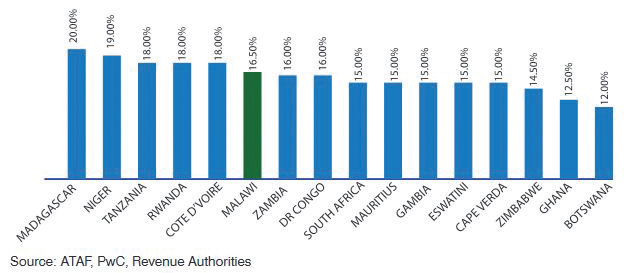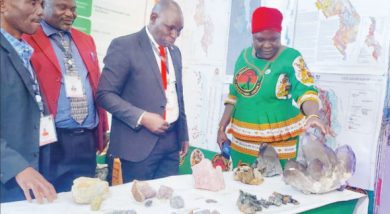Inefficiencies grip Malawi’s vat system
The new Domestic Revenue Mobilisation Strategy has exposed glaring inefficiencies in the country’s value added tax (VAT) system, revealing that the country is only collecting a meagre 14 percent of VAT potential revenue.
The strategy, which was launched on Monday in Lilongwe to guide the implementation of the country’s tax, non-tax policy as also tax administration between 2021 and 2026, also shows that if gross collections from VAT could be discounted for VAT refunds, the actual collections from such a tax component could actually be much lower.

In sub-Saharan Africa, VAT C-efficiency currently stands at 35 percent while the world average VAT C-efficiency is 51 percent.
This means that at 14 percent, Malawi’s efficiency in collecting VAT is way below both the regional and global standards.
The C-efficiency ratio is the most commonly used indicator for evaluating the revenue performance and overall efficiency of the VAT system.
It is simply the ratio of actual revenues to theoretical revenues from a perfectly enforced tax levied at a uniform rate on all consumption.
Reads the strategy: “The underperformance in VAT collections points to gaps in tax policy and the capacity of the tax administration to enforce collections. Modernising the VAT may provide an estimated additional two percent of GDP in VAT revenues.”
Meanwhile, the strategy has recommended for the need to modernising the VAT to provide an estimated additional two percent of GDP in VAT revenues.
A Blantyre-based tax expert Emanuel Kaluluma, who is senior tax consultant at EK Tax Consultants, on Tuesday attributed the VAT revenue underperformance to low voluntary compliance which he said relates to VAT revenue collection.
He said: “Taxpayer education is lacking. It is hard to justify what government does with the money. There has also been poor administration of VAT when it was administered and this is because surtax was under customs officials who were properly trained, but when decisions were made to make it [surtax] become under income tax, income tax officers lacked background.”
In her presentation on the new revenue strategy on Monday, Revenue Policy Division deputy director Chikaiko Chilima said revenue performance by category reveals that Malawi relies more on direct taxes than consumption taxes.
However, she said that the country has potential to expand consumption taxes and increase its share in the revenue mix since they are broader, more efficient and growth friendly than direct taxes.
Finance Minister Felix Mlusu said the strategy has identified key areas to enhance revenue collection and these include automation and modernisation of tax and non-tax revenue policy and collection systems at the national and local level, widening the tax base, building a culture of tax compliance among all citizens through strengthening enforcement, simplifying tax laws and improving transparency as well as developing professionalism, skills and tools for tax policy analysis and reforms for the tax administration.
VAT is levied on final consumption of goods and services and was first known as surtax which was introduced under the Customs and Excise (Tariffs) Order of 1989.
The strategy seeks to increase the ratio of the country’s domestic revenue to gross domestic product (GDP) by five percentage points from the current 14 percent to 19 percent in the next five years.
Malawi’s domestic revenue ratio to GDP was at 13.4 percent for the 2019/20 financial year. Such a rate was the lowest in the region and compared negatively to the sub-Saharan average of 16 percent.
According to the World Bank, a tax to GDP ratio of 15 percent is the minimum threshold required for the government to provide basic goods and services to the citizenry while the United Nations estimates that developing countries need to raise at least 20 percent of their GDP through taxes to meet Sustainable Development Goals by 2030.






One Comment